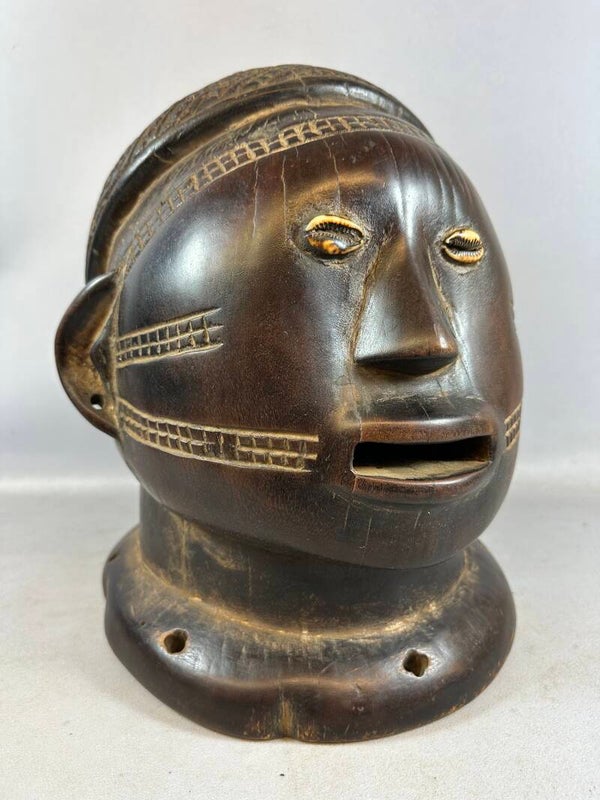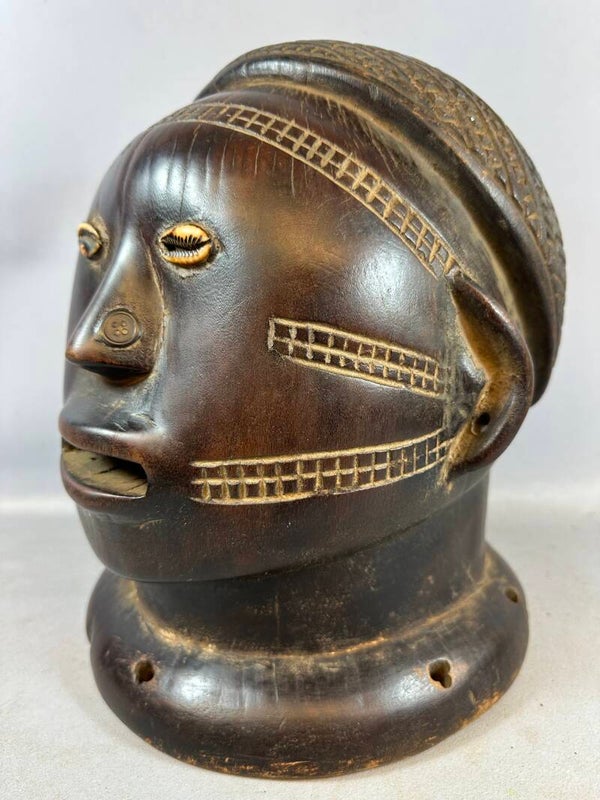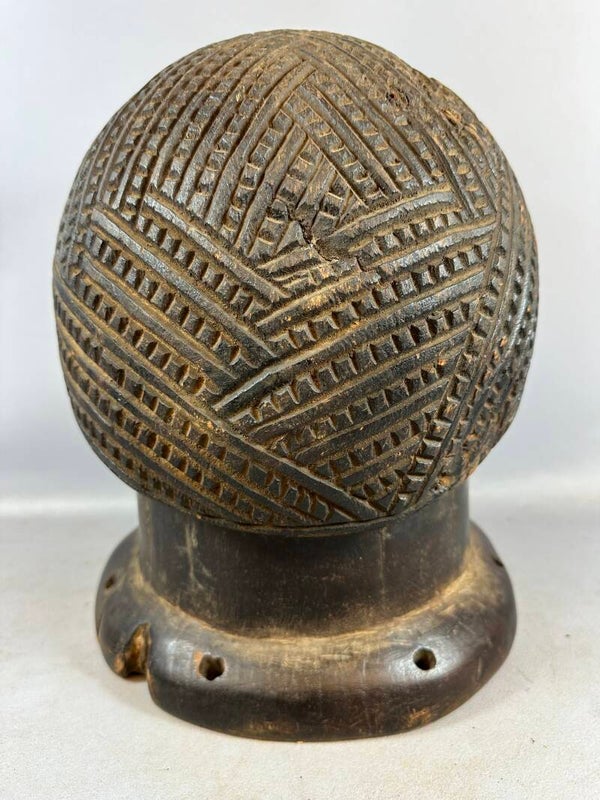240659 - Old and Rare African Tabwa woman helm mask - Congo
Old & Rare African Tabwa woman helm mask, Congo.
Size: 34 cm high and more then 5 kilo.
This Tabwa helm mask dates from the mid of the 20th century and was purchased in my private collection in 2017, with a certificate of authenticity.
The Tabwa people lived under Luba domination in small autonomous villages scattered within a territory that expanded from the southeast of the Democratic Republic of the Congo to the northeast of Zambia, along Lake Tanganyika. The verb "tabwa" means "to be tied up" and refers to when these people were taken as slaves. During the 19th century, the ivory trade brought wealth to the region and Tabwa people gained their independence.
Today, they number 200,000 and are led by chiefs-sorcerers who rule over village chiefs and family chiefs. Their power is counterbalanced by male societies created on Luba prototypes and by female associations influenced by East African models. Traditionally, Tabwa people made their living from hunting and blacksmithing; nowadays they cultivate millet, manioc, cassava, beans, and corn, but they live primarily off fishing and hunting, for game is plentiful.
The influence of Eastern Tanzanian neighbors on Tabwa art is seen in their use of linear geometric decorations, while their western neighbors, the Luba, influenced the incorporation of prestige objects into Tabwa life. The Tabwa worshipped ancestors, whose statues were the property of the lineage chiefs and sorcerers; these carried “medications” in their ears or in small cavities at the top of their heads. The Tabwa also worshipped the spirits of nature, who lived in trees and rocks. The installation of a supreme chief is of relatively recent vintage; formerly it was the function of the large ancestor figures to consolidate the power of the chiefs. Other statuettes were used for divination.
The Tabwa also made twin figures that could be both dangerous and bearers of good luck. In the north of Tabwa country, the diviner was also a sculptor; consulted after a dream, he would create a new statue. Special attention was paid to scarifications, which embellish the body and recall social values. On the whole surface of the body, a recurrent motif consists of twinned isosceles triangles, the two bases of which symbolize the duality of life. They evoke the coming of the new moon, essential to Tabwa philosophy, whose return would be celebrated monthly.
The Tabwa used two types of masks: a human one, which represented woman, and another in the form of a buffalo head, whichrepresented man. Both would make an appearance at the time of the fecundity ritual, celebrated for sterile women. One also finds paddles, combs, and musical instruments with figurines.



















